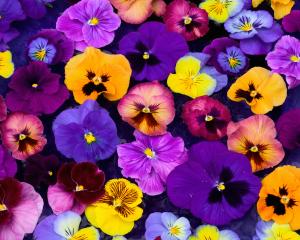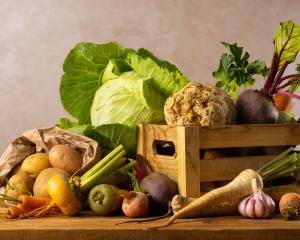Mild days over the next few weeks often have cold southerlies snapping at their heels, so instead of rushing out to sow seeds - except perhaps some late broad beans - concentrate on getting your ground into good condition, what old gardeners called "in good heart". Actually, it is our hearts that feel good when the soil yields great spuds or fine carrots.
Soil is finely ground particles of ancient rock, broken down by chemical and environmental action over thousands, even millions, of years. As well as ancient weathered rock, soil contains water, air and decaying organic matter (plant and animal material), plus insect larvae, earthworms, good and bad bacteria and fungi spores.
Soils vary according to the rock from which it was formed, the texture of it, the amount and types of organic material and the presence of trace elements, such as manganese.
The terms heavy or light are often used to describe garden soils.
Heavy has a high proportion of clay, making it wet and cold in winter and spring. It then dries to an almost concrete-like consistency in hot, dry weather.
The plus side is that because clay is made up of tiny particles, it has the potential to release more nutrients than lighter ground.
Light soils have more sand or gravel in their makeup and being freer-draining, they are ideal for early crops but because they dry out quickly in summer, constant watering is necessary later in the season.
When it has completely decayed, organic material in the soil leaves a dark brown residue known as humus.
Humus not only improves soil texture by sticking to soil particles but, more importantly, feeds the micro-organisms that help transform chemicals into forms plants can feed on. Too much humus will neutralise lime in the soil and more will be needed to balance the soil; too little humus and plants will starve.
The nourishment plants draw up has to be replenished with organic material. Because rain leaches out calcium, magnesium and potassium, all vital elements to good growth, they, too, need topping up at intervals.
Insufficient calcium means soil is too acid for many vegetables, including cabbages, so lime needs to be applied.
To measure acidity, the pH scale is used. The greater the acidity, the lower the number on the scale, which runs from 1 to 14. A pH of 7 is neutral. Kits are available, so you can check your soil. Most vegetables like pH values in the range of 5.5 to 7.00, although potatoes and rhubarb like more acid soils, with a pH of 5.0 to 6.0.
For clay soils, gypsum is great for improving soil structure. Calcium-rich, with some sulphur and other trace elements, it can be added in place of common garden lime and as well as helping maintain pH at a level in which veges do well, gypsum improves the soil structure by encouraging clay particles to clump together. It also encourages the growth of helpful soil organisms.
Fresh animal manure can go straight on to the garden in an area that is not going to be used for a couple of months. Then add blood and bone (a good handful to the square metre), dig it all in and grow cabbages, cauliflowers, lettuces, spinach and silverbeet.
Green manure is produced by growing a crop such as oats, lupins or red clover in vacant ground, then digging it before it flowers. Mustard is a good one to grow if you have problems with wireworm attacking potato tubers.
Compost is tops. Keep costs down by making your own (some councils have free how-to leaflets) or buy bags of a good commercial product.
Compost with animal manure needs to be well-rotted before going on to places where carrots, parsnips and other root veges are to be grown, as the smallest trace of fresh manure causes the roots to fork - interesting and sometimes amusing, but not what the cook needs.
Get cracking now and your garden patch will reward you with veges that will be the envy of your neighbourhood.












